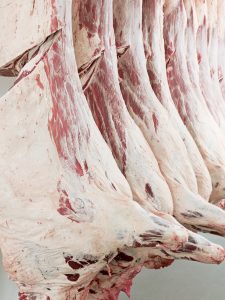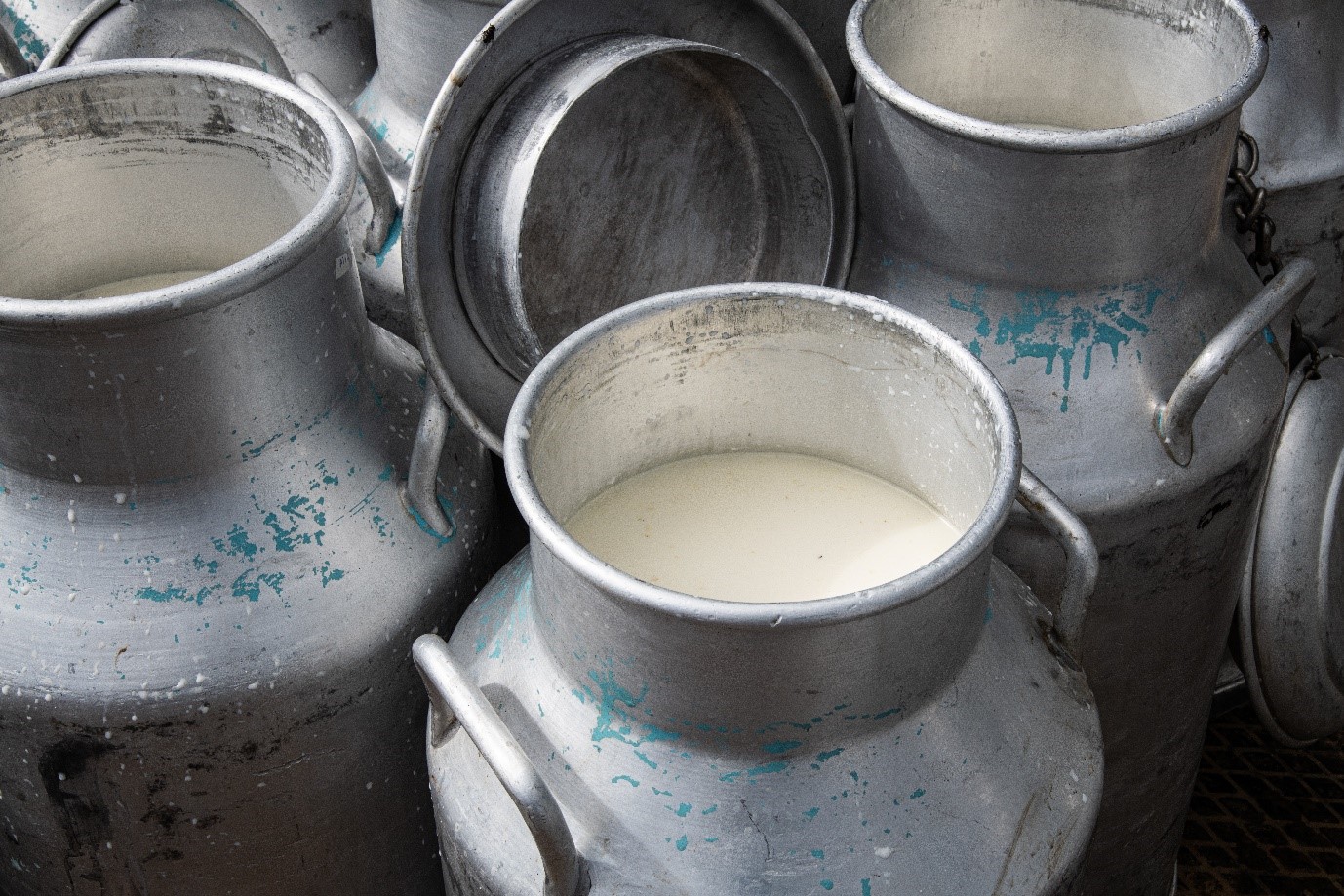



Weekly beef and dairy digest: US and Argentine cattle sectors make gains
US beef exports and milk production make a rebound and Argentina's beef output is expected to remain steady amid economic uncertainty.US beef exports continue to improve
Net sales of 15,800 metric tonnes (MT) for 2021 were up 3% from the previous week and 17% from the prior four-week average. Increases were primarily for Japan (5,100 MT, including decreases of 1,000 MT), South Korea (3,200 MT, including decreases 400 MT), China (3,000 MT, including decreases of 100 MT), Taiwan (900 MT, including decreases of 100 MT), and Canada (800 MT, including decreases of 100 MT).
Net sales of 1,600 MT for 2022 primarily for Mexico (1,100 MT), were offset by reductions for South Korea (100 MT). Exports of 18,200 MT were up 8% from the previous week and 1% from the prior four-week average. The destinations were primarily to Japan (5,000 MT), South Korea (4,700 MT), China (3,500 MT), Taiwan (1,400 MT), and Mexico (1,200 MT).
August US milk production up 1.1%
USDA this week reported US milk production in the 24 major states during August totaled 18.0 billion pounds, up 1.1% from August 2020. July revised production, at 18.3 billion pounds, was up 2.0% from July 2020. The July revision represented a decrease of 18 million pounds or 0.1% from last month's preliminary production estimate. Production per cow in the 24 major States averaged 2,007 pounds for August, 3 pounds below August 2020.
.jpg)
The number of milk cows on farms in the 24 major States was 8.97 million head, 112,000 head more than August 2020, but 20,000 head less than July 2021. Production per cow in the United States averaged 1,987 pounds for August, 1 pound below August 2020. The number of milk cows on farms in the entire United States was 9.48 million head, 106,000 head more than August 2020, but 19,000 head less than July 2021.
Argentina beef production seen steady in 2022
Argentine beef production for 2022 is forecast at 3.02 million tonnes carcass weight equivalent (CWE), practically unchanged from 2021 as cattle slaughter number and the average carcass weight are expected to be similar. The cattle herd is also projected to remain at the same size at 53.6 million head. This level is 1.4 million head lower than the ending inventory of 2018 as a result of larger slaughter numbers in 2019 and 2020 and smaller calf crops in 2020 and 2021. In May 2021, the government limited beef exports with the goal of reducing retail beef prices whose rise they blamed on a strong foreign demand and large export volumes.
Since then, the local cattle/beef sector has remained in a “wait and see” mode, looking for signals from the government to return to normal business operations. Since the ban was imposed, cattle prices in nominal terms remained almost unchanged, but with a significant loss in real terms due to high inflation.

USDA’s weekly dairy market at-a-glance report
- Butter: Grade AA closed at $1.7900. The weekly average for Grade AA is $1.8075 (+0.0206).
- Cheese: Barrels closed at $1.5100 and 40# blocks at $1.7925. The weekly average for barrels is $1.4890 (+0.0221) and blocks, $1.7995 (+0.0370).
- Non-fat dry milk: Grade A closed at $1.3500. The weekly average for Grade A is $1.3395 (-0.0155).
- Dry whey: Extra grade dry whey closed at $0.5350. The weekly average for dry whey is
- $0.5300 (+0.0100).
Cheese highlights
Spot milk prices in the Midwest tightened, as the Labor Day holiday weekend is fully in the rearview mirror regarding extra spot milk availability. Spot milk prices in the Midwest were $.50 to $1 over Class III. Last year during week 37, prices were $4 under to Class, and two years ago prices were $.50 under to $1.75 over Class.
Cheese demand tones are slightly weaker in the East and West, while some Midwestern producers say they are booked for the rest of 2021. Inventories are mixed regionally, but barrels are more
available than block loads. Cheese market tones are uncertain. The large CME price gap between block prices and barrel prices remains relatively large.
.jpg)
Butter highlights
Cream supplies are tight. Butter production varies but is trending downward as planned downtime, difficulties finding cream early in the week, and staffing shortages have reportedly impacted plant operating capacities. Inventories are ample, and butter stocks are available for near term commitments. Retail sales are steady to growing.
Food service orders are somewhat mixed; contacts report that butter demand is strengthening in some distribution channels, weakening in others, and unchanged in the rest. This week across the country, bulk butter overages range from 0.01 to 0.08 cents above market.
Fluid milk
Farm milk production is mixed in the United States. Cooler nights/mornings have prompted some contacts in the Midwest and Pacific Northwest to report rebounds in milk output. Most other areas are reporting flat to slight declines week to week, during summer’s last full week. Class I pipelines are replenished, but sales remain stronger than last year, when schools were not nearly as active due to pandemic related school schedules. Class II sales are steady in the West, and Class II and III processors suggest milk is tighter due to bottling pulls.
Cheese producers in the Midwest paid $.50 to $1 over Class, as prices increased following the Monday holiday of last week. Condensed skim trading was steady. Cream supplies are less available in the East and West. Cream availability was mixed in the Midwest.

Dry products
Low/medium heat non-fat dry milk (NDM) prices increased in all regions. Cheesemakers are using more NDM to fortify, and domestic demand has picked up generally. High heat NDM markets are firm. Buttermilk powder prices are steady to higher, as well. As condensed buttermilk moves into ice cream production, dry buttermilk processors say they are conserving loads for contractual obligations, as supplies are generally tight. Dry whole milk prices held steady on limited production/inventories. International whole milk powder markets are steady to bullish, and contacts view domestic dry whole milk markets similarly.
Dry whey markets are unsettled, with prices steady in the Central region, steady to lower in the Northeast and the price range narrowing in the West. Higher protein markets, such as WPC 80% and whey protein isolates, are viewed as very bullish/firm. Therefore, more condensed whey is moving into those avenues. Whey protein concentrate 34% prices are steady, as inventories of interchangeable loads are readily accessible.
Lactose prices are also unchanging, while producers prep for Q4 contracting. Casein prices were mostly steady, but acid casein prices moved slightly higher on continuingly bullish market tones.
Western European dairy overview
Industry contacts in Europe report milk output is seasonally declining. After recovering in parts of Europe in July, summer heat and humidity has pressed milk volumes lower later in the summer. Contacts suggest milk deliveries are shrinking week to week and are below levels from last year.
Cream and skim milk concentrate supplies are also tight. Prices for raw milk and cream have risen through the last couple months. In many cases, milk handlers are moving milk into cheese production at the expense of fluid milk, butter and milk powder production.
TheCattleSite News Desk
IMPORTANT NOTE: I am not a futures broker and do not manage any trading accounts other than my own personal account. It is my goal to point out to you potential trading opportunities. However, it is up to you to: (1) decide when and if you want to initiate any traders and (2) determine the size of any trades you may initiate. Any trades I discuss are hypothetical in nature.
Here is what the Commodity Futures Trading Commission (CFTC) has said about futures trading (and I agree 100%): 1. Trading commodity futures and options is not for everyone. IT IS A VOLATILE, COMPLEX AND RISKY BUSINESS. Before you invest any money in futures or options contracts, you should consider your financial experience, goals and financial resources, and know how much you can afford to lose above and beyond your initial payment to a broker. You should understand commodity futures and options contracts and your obligations in entering into those contracts. You should understand your exposure to risk and other aspects of trading by thoroughly reviewing the risk disclosure documents your broker is required to give you.



